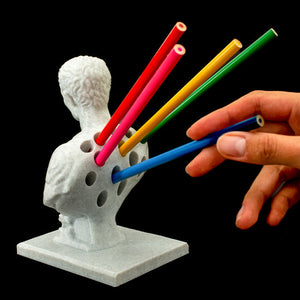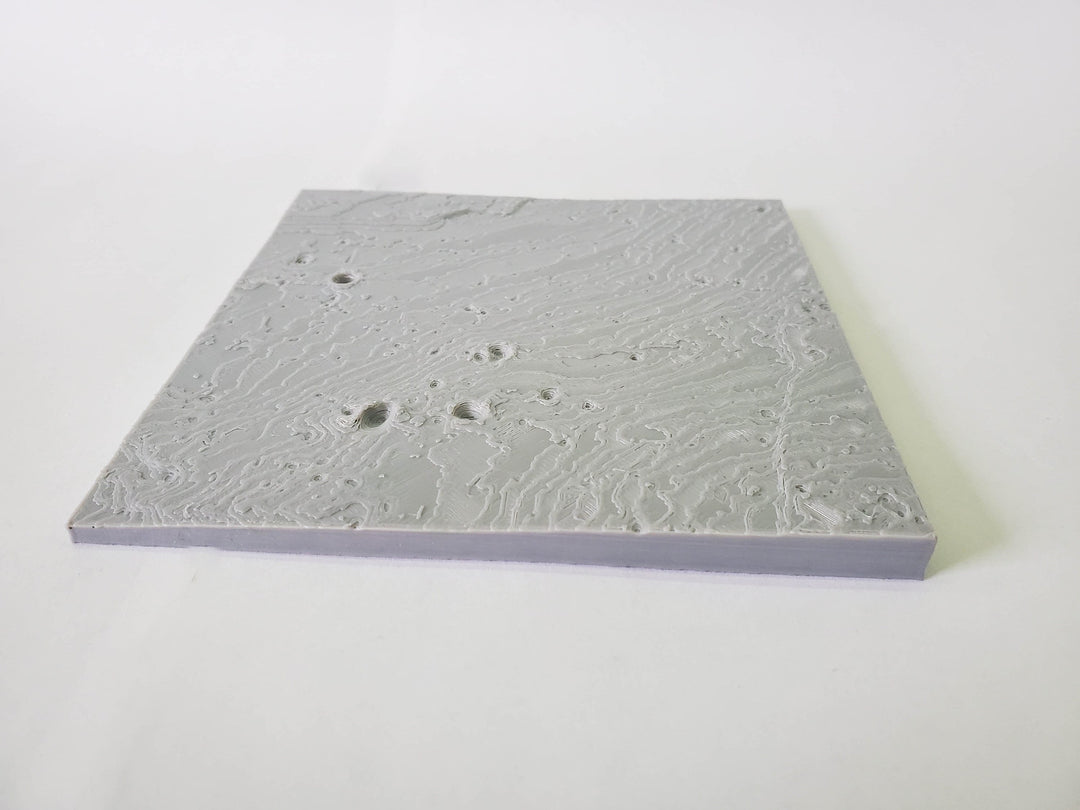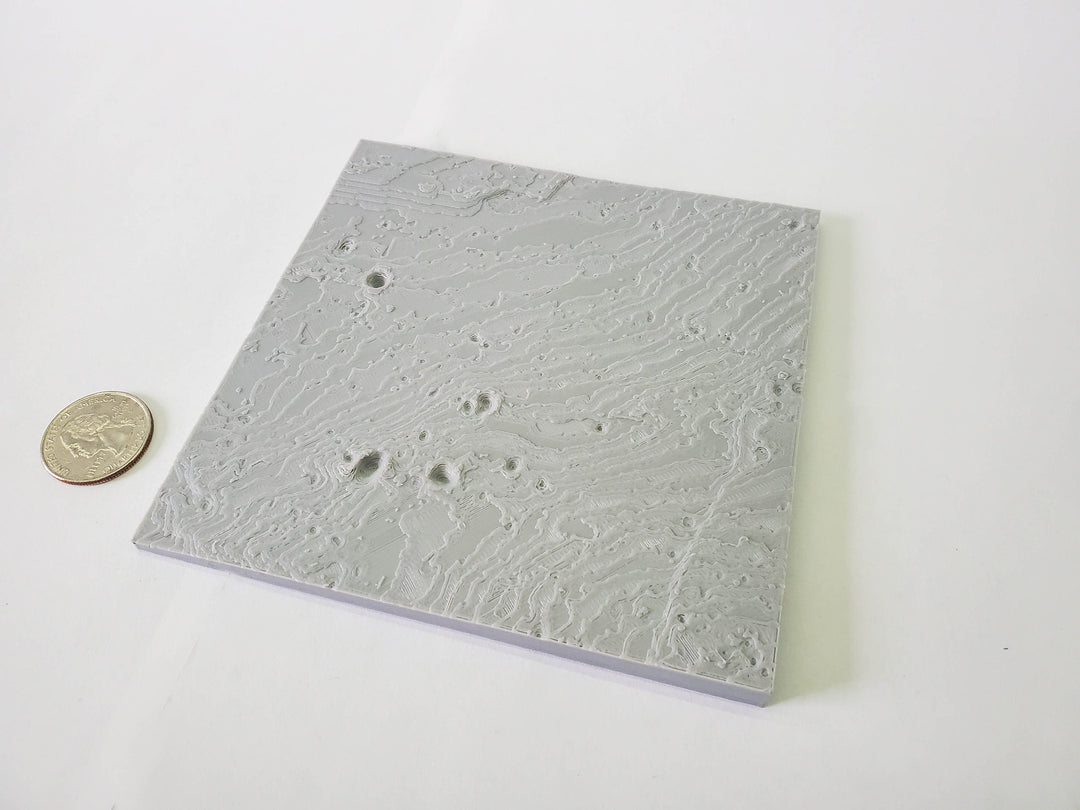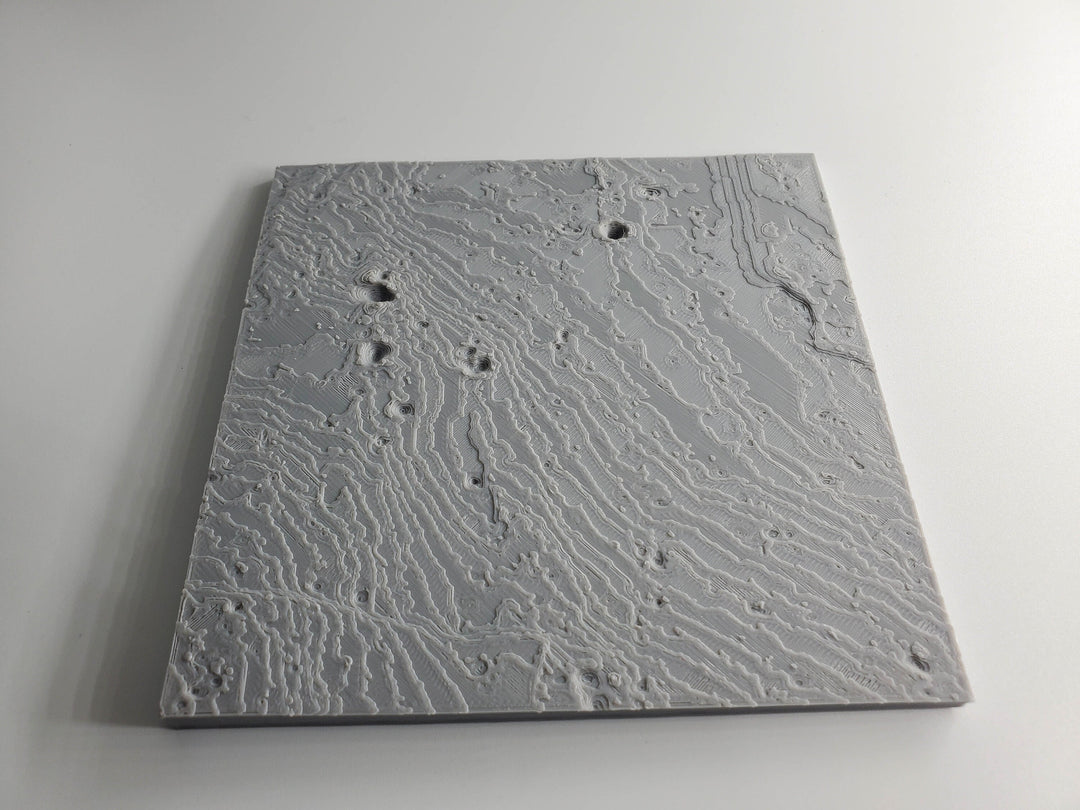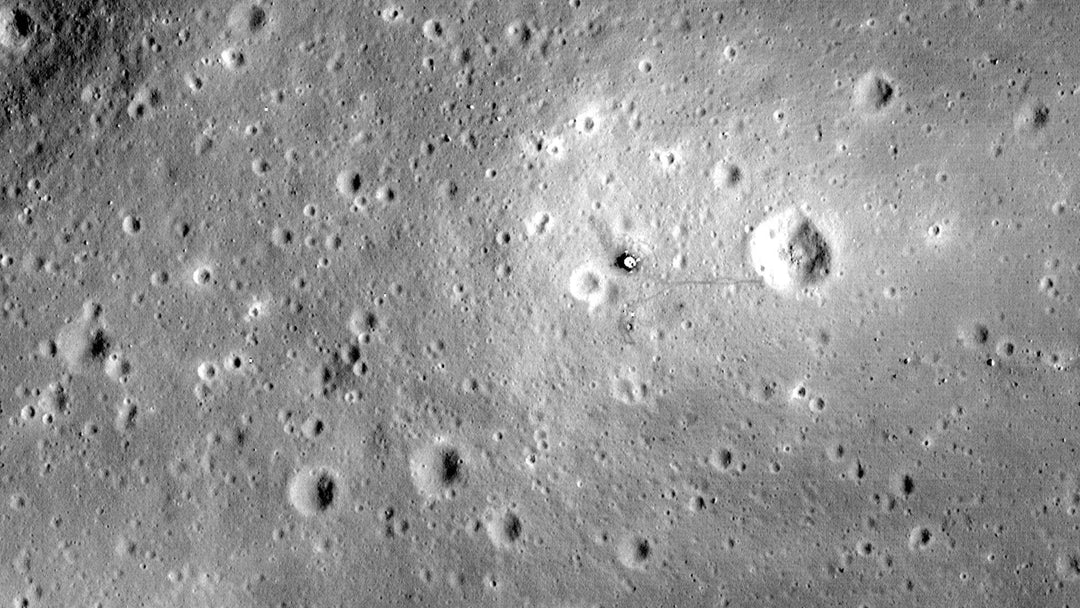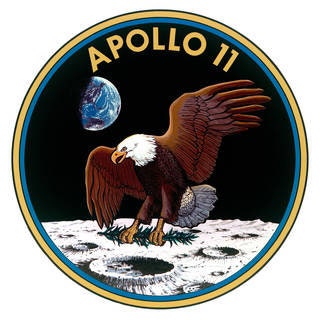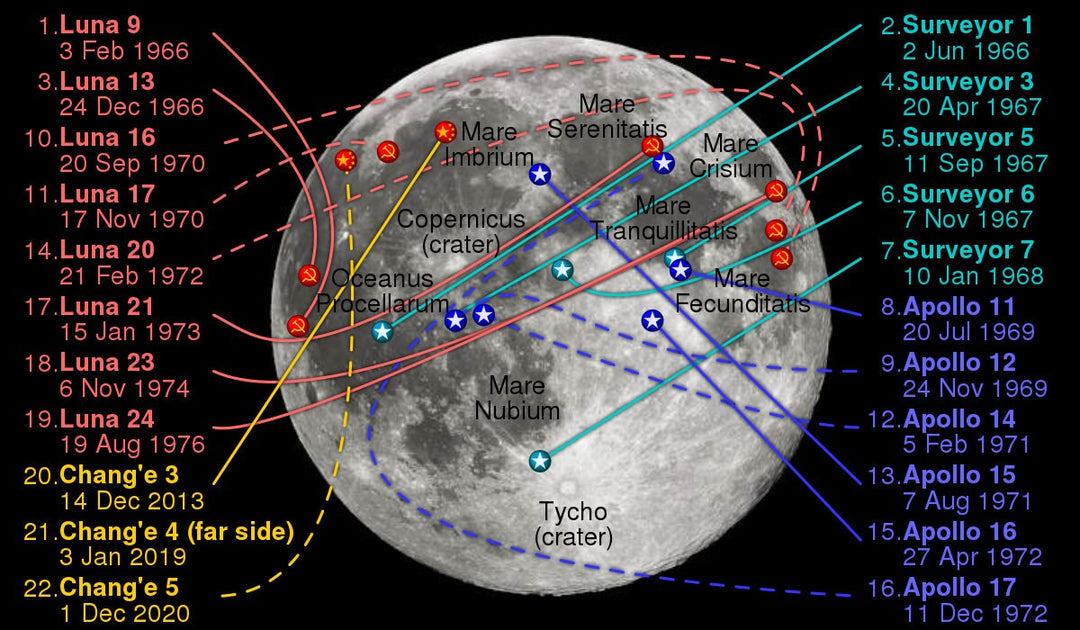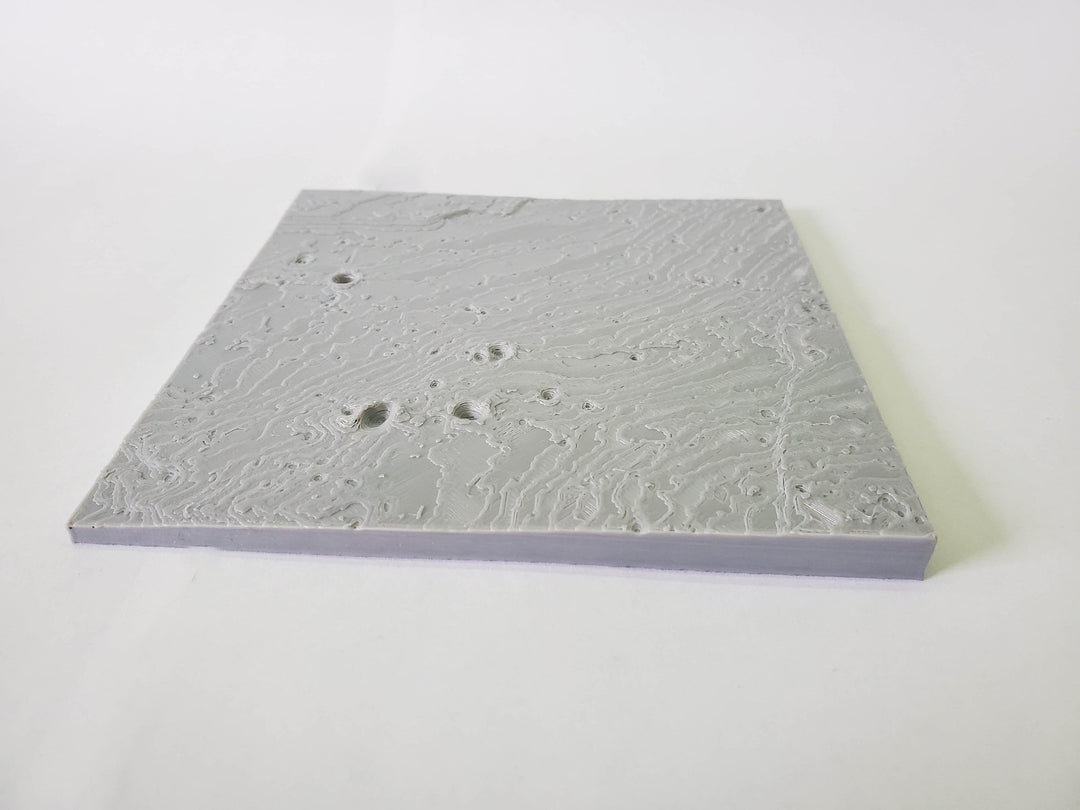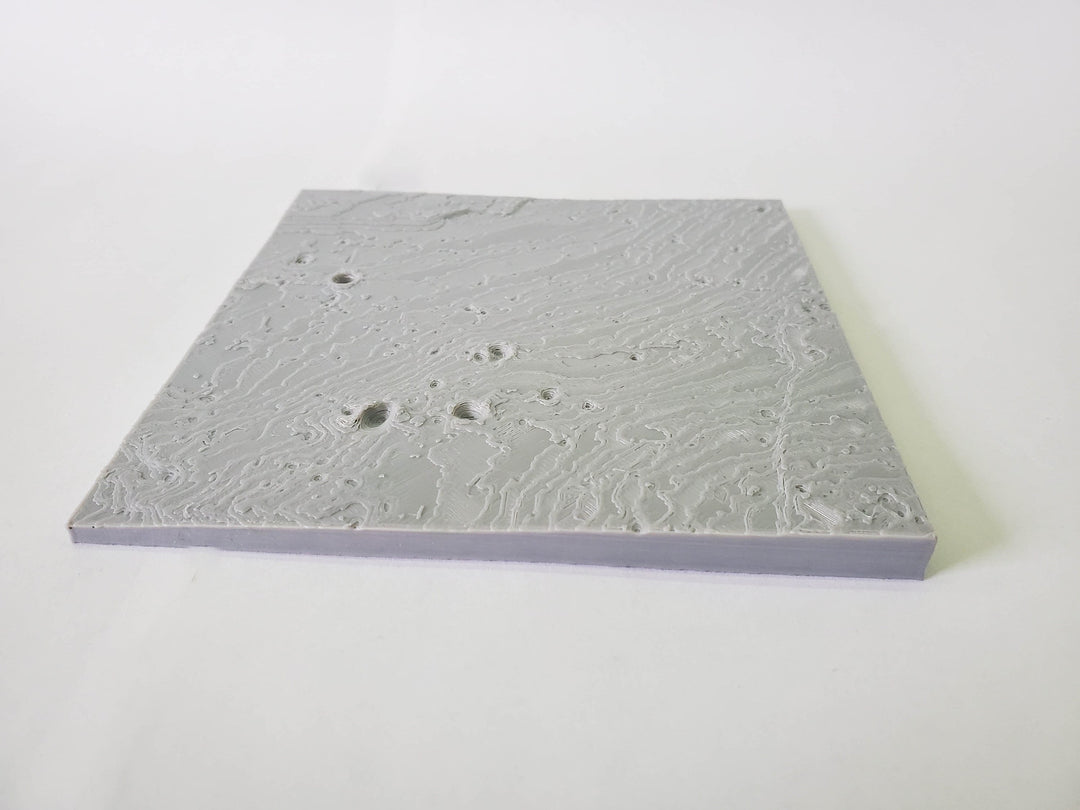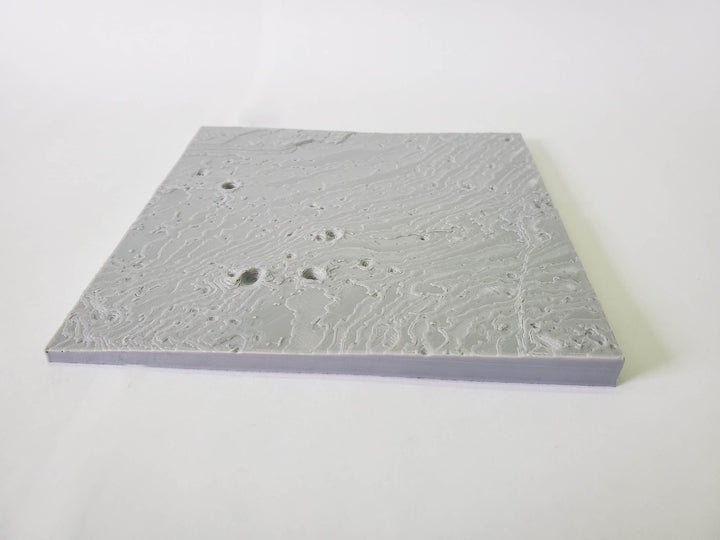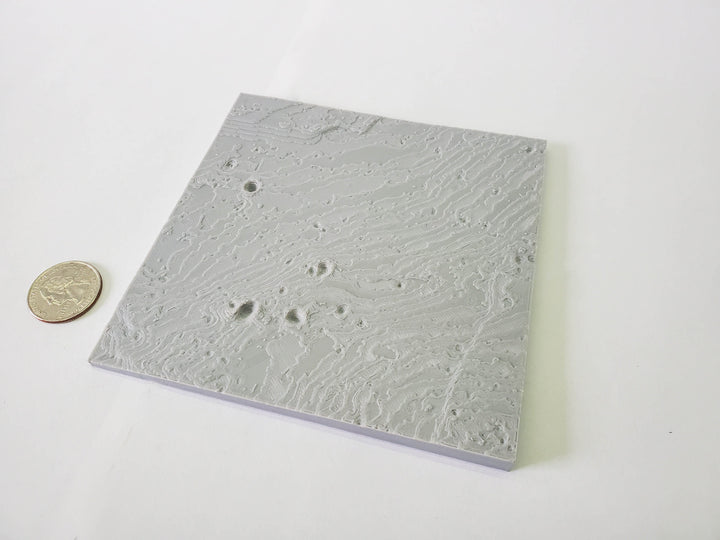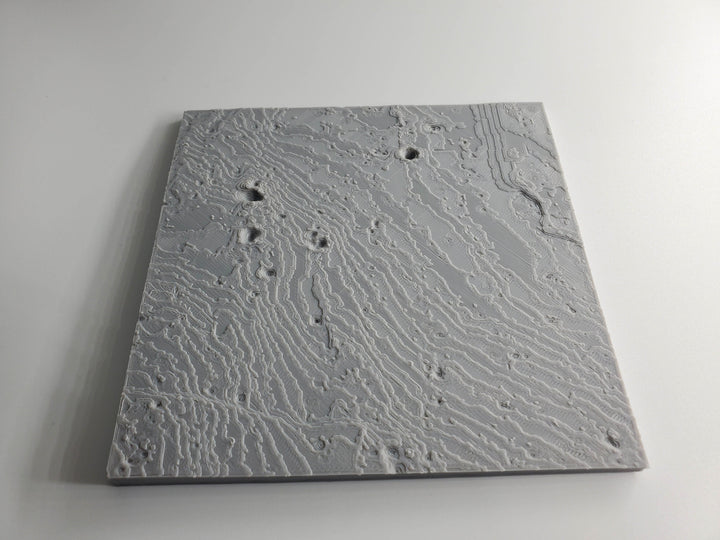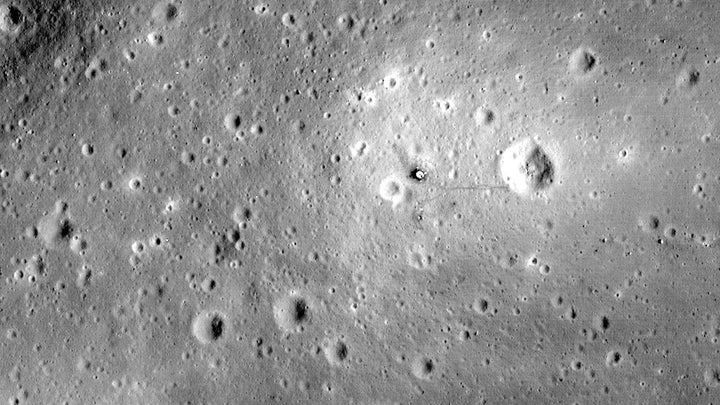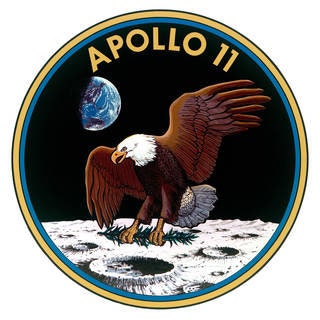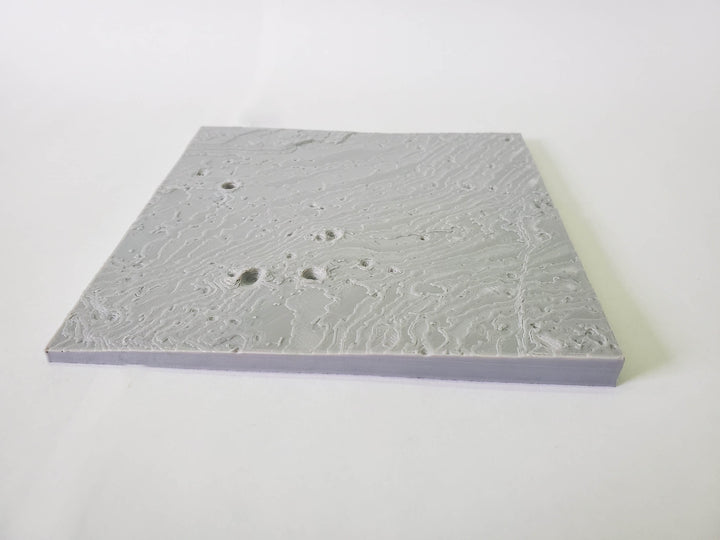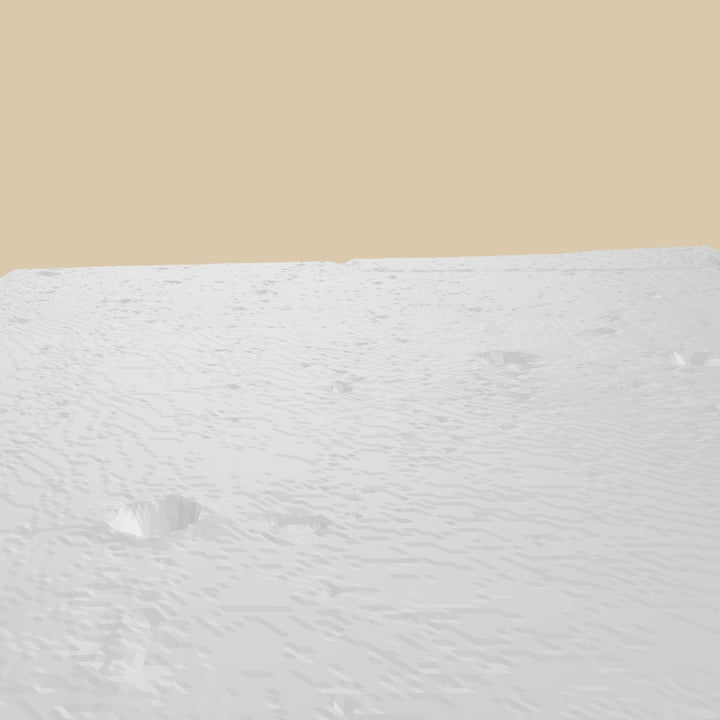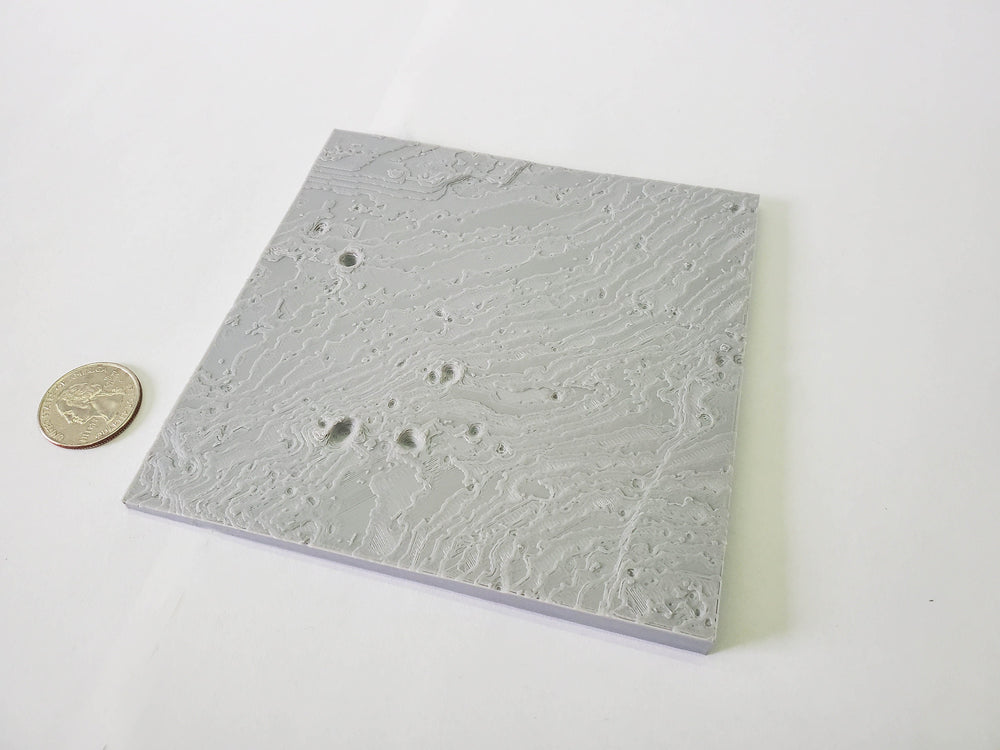APOLLO 11 - The First Moon Landing Site - Accurate 3D Topographical Map

Description:
This is a detailed 3D Topographical map of what was the first moon landing. This 3D topo map covers an area of 30km x 30km. It is built in the USA of a durable and plant based plastic. The Apollo mission launched on 7/16/69 in a new shiny Saturn 5 and landed back on earth 8 days, 3 hours and 18 minutes later on 7/24/69 into the Pacific Ocean after having landed in the Sea of Tranquility ON THE MOON!
DIMENSIONS
SMALL
13 cm or 5 inches long
13 cm or 5 inches wide
1.3 cm or5 inch tall
LARGE
17.8 cm or 7 inches long
17.8 cm or 7 inches wide
2 cm or75 inch tall
Visit our other accurate topographical 3d maps of other landmarks, craters, landing sites, etc.
All Apollo missions are available:
Apollo 11: Sea of Tranquility
Apollo 12: Ocean of Storms
Apollo 14: Fra Mauro
Apollo 15: Apennine Mountains
Apollo 16: Descartes Highlands
Apollo 17: Taurus-Littrow
MORE ABOUT APOLLO 15 (Source NASA.gov):
Apollo 11 launched from Cape Kennedy on July 16, 1969, carrying Commander Neil Armstrong, Command Module Pilot Michael Collins and Lunar Module Pilot Edwin "Buzz" Aldrin into an initial Earth-orbit of 114 by 116 miles. An estimated 650 million people watched Armstrong's televised image and heard his voice describe the event as he took "...one small step for a man, one giant leap for mankind" on July 20, 1969.
Two hours, 44 minutes and one-and-a-half revolutions after launch, the S-IVB stage reignited for a second burn of five minutes, 48 seconds, placing Apollo 11 into a translunar orbit. The command and service module, or CSM, Columbia separated from the stage, which included the spacecraft-lunar module adapter, or SLA, containing the lunar module, or LM, Eagle. After transposition and jettisoning of the SLA panels on the S-IVB stage, the CSM docked with the LM. The S-IVB stage separated and injected into heliocentric orbit four hours, 40 minutes into the flight.
The first color TV transmission to Earth from Apollo 11 occurred during the translunar coast of the CSM/LM. Later, on July 17, a three-second burn of the SPS was made to perform the second of four scheduled midcourse corrections programmed for the flight. The launch had been so successful that the other three were not needed.
On July 18, Armstrong and Aldrin put on their spacesuits and climbed through the docking tunnel from Columbia to Eagle to check out the LM, and to make the second TV transmission.
On July 19, after Apollo 11 had flown behind the moon out of contact with Earth, came the first lunar orbit insertion maneuver. At about 75 hours, 50 minutes into the flight, a retrograde firing of the SPS for 357.5 seconds placed the spacecraft into an initial, elliptical-lunar orbit of 69 by 190 miles. Later, a second burn of the SPS for 17 seconds placed the docked vehicles into a lunar orbit of 62 by 70.5 miles, which was calculated to change the orbit of the CSM piloted by Collins. The change happened because of lunar-gravity perturbations to the nominal 69 miles required for subsequent LM rendezvous and docking after completion of the lunar landing. Before this second SPS firing, another TV transmission was made, this time from the surface of the moon.
On July 20, Armstrong and Aldrin entered the LM again, made a final check, and at 100 hours, 12 minutes into the flight, the Eagle undocked and separated from Columbia for visual inspection. At 101 hours, 36 minutes, when the LM was behind the moon on its 13th orbit, the LM descent engine fired for 30 seconds to provide retrograde thrust and commence descent orbit insertion, changing to an orbit of 9 by 67 miles, on a trajectory that was virtually identical to that flown by Apollo 10. At 102 hours, 33 minutes, after Columbia and Eagle had reappeared from behind the moon and when the LM was about 300 miles uprange, powered descent initiation was performed with the descent engine firing for 756.3 seconds. After eight minutes, the LM was at "high gate" about 26,000 feet above the surface and about five miles from the landing site.
The descent engine continued to provide braking thrust until about 102 hours, 45 minutes into the mission. Partially piloted manually by Armstrong, the Eagle landed in the Sea of Tranquility in Site 2 at 0 degrees, 41 minutes, 15 seconds north latitude and 23 degrees, 26 minutes east longitude. This was about four miles downrange from the predicted touchdown point and occurred almost one-and-a-half minutes earlier than scheduled. It included a powered descent that ran a mere nominal 40 seconds longer than preflight planning due to translation maneuvers to avoid a crater during the final phase of landing. Attached to the descent stage was a commemorative plaque signed by President Richard M. Nixon and the three astronauts.
The flight plan called for the first EVA to begin after a four-hour rest period, but it was advanced to begin as soon as possible. Nonetheless, it was almost four hours later that Armstrong emerged from the Eagle and deployed the TV camera for the transmission of the event to Earth. At about 109 hours, 42 minutes after launch, Armstrong stepped onto the moon. About 20 minutes later, Aldrin followed him. The camera was then positioned on a tripod about 30 feet from the LM. Half an hour later, President Nixon spoke by telephone link with the astronauts.
Commemorative medallions bearing the names of the three Apollo 1 astronauts who lost their lives in a launch pad fire, and two cosmonauts who also died in accidents, were left on the moon's surface. A one-and-a-half inch silicon disk, containing micro miniaturized goodwill messages from 73 countries, and the names of congressional and NASA leaders, also stayed behind.
During the EVA, in which they both ranged up to 300 feet from the Eagle, Aldrin deployed the Early Apollo Scientific Experiments Package, or EASEP, experiments, and Armstrong and Aldrin gathered and verbally reported on the lunar surface samples. After Aldrin had spent one hour, 33 minutes on the surface, he re-entered the LM, followed 41 minutes later by Armstrong. The entire EVA phase lasted more than two-and-a-half hours, ending at 111 hours, 39 minutes into the mission.
Armstrong and Aldrin spent 21 hours, 36 minutes on the moon's surface. After a rest period that included seven hours of sleep, the ascent stage engine fired at 124 hours, 22 minutes. It was shut down 435 seconds later when the Eagle reached an initial orbit of 11 by 55 miles above the moon, and when Columbia was on its 25th revolution. As the ascent stage reached apolune at 125 hours, 19 minutes, the reaction control system, or RCS, fired so as to nearly circularize the Eagle orbit at about 56 miles, some 13 miles below and slightly behind Columbia. Subsequent firings of the LM RCS changed the orbit to 57 by 72 miles. Docking with Columbia occurred on the CSM's 27th revolution at 128 hours, three minutes into the mission. Armstrong and Aldrin returned to the CSM with Collins. Four hours later, the LM jettisoned and remained in lunar orbit.
Trans-Earth injection of the CSM began July 21 as the SPS fired for two-and-a-half minutes when Columbia was behind the moon in its 59th hour of lunar orbit. Following this, the astronauts slept for about 10 hours. An 11.2 second firing of the SPS accomplished the only midcourse correction required on the return flight. The correction was made July 22 at about 150 hours, 30 minutes into the mission. Two more television transmissions were made during the trans-Earth coast.
Re-entry procedures were initiated July 24, 44 hours after leaving lunar orbit. The SM separated from the CM, which was re-oriented to a heat-shield-forward position. Parachute deployment occurred at 195 hours, 13 minutes. After a flight of 195 hours, 18 minutes, 35 seconds - about 36 minutes longer than planned - Apollo 11 splashed down in the Pacific Ocean, 13 miles from the recovery ship USS Hornet. Because of bad weather in the target area, the landing point was changed by about 250 miles. Apollo 11 landed 13 degrees, 19 minutes north latitude and 169 degrees, nine minutes west longitude July.
Features:
1️⃣ Apollo 11 landing site - Sea of Tranquility.
2️⃣ Accurate representation take from satellite 3d scans of the surface.
3️⃣ Area of map is 30 km x 30 km.
4️⃣ Site of the first moon landing.
5️⃣ 3d printed to order from a plant based and environmentally friendly PLA plastic using 100% renewable energy in Beaverton, Oregon.
Dimensions:
Height: 7 inches
Length: 7 inches
Width: 0.5 inches
More Information:
⚡ This is made to order using 100% renewable energy in our home here in Beaverton, Oregon.
☘️ This is 3d printed from a plant based, durable, biodegradable and environmentally safe type of plastic.
📦 Check out our other carefully selected products and get a discount on multiple items.
♻️ Where possible we try to ship using sustainable and recycled packing material.
🕒 Most orders are made on demand immediately after you place the order and shipped the same day or within 24 hours.
✉️ Please contact me for anything.
The sustainable PLA plastic that we use is made from a durable, non-toxic, plant based, biodegradable, and energy saving plastic typically used to make industrial prototypes, medical implants, and countless household items. The bioplastic is derived from sustainably sourced plants instead of petrochemicals and hydrocarbons from fossil fuels.
Most items are custom made to order and shipped the same day or within 24 hours. Very large orders may take longer. See your cart for estimated arrival times.
If anything is defective, damaged or wrong with the order please contact me as soon as possible so that I can make it right. Returns and exchanges accepted within 60 days of receiving your item.

